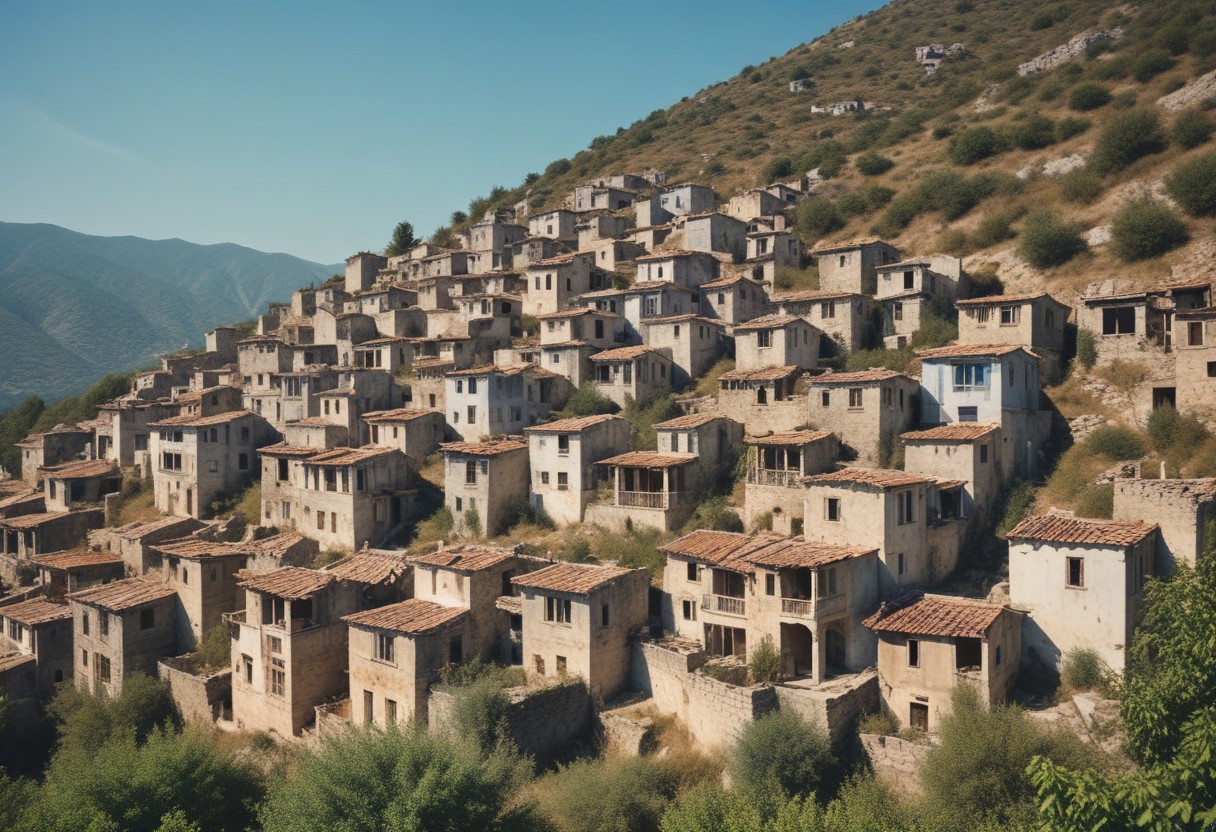Delving into the past of Kayaköy, also known as Levissi, uncovers a tale from the 18th century. Greek colonists from Gemiler Island established the village to evade pirates in the vicinity. By the 1700s, the village flourished with 300 households, prospering in its scenic surroundings. Ottoman Empire documents from 1912 show a populace of 6,500 inhabitants in Kayaköy.
Kayaköy is mostly populated by Greeks who work in trade and craftsmanship. It is located at the foot of a mountain that reaches towards the sea. Its terrain, unsuitable for agriculture, deterred Turkish settlers who preferred the fertile plains nearby for farming. Historical records refer to the Turkish settlement in the region as Kayıköy.
The Balkan War in the 1910s caused Greece and Turkey to exchange populations for stability in the region. Greeks in Kayaköy were forced to emigrate.
After Greeks left Kayaköy, Muslims were allocated the region but chose not to live there due to unsuitable terrain. The village became deserted and damaged after an earthquake in 1957.
Kayaköy in Fethiye is a hidden gem, often overlooked by tourists. The ghost village, once home to thousands, now attracts visitors with its ruined historic dwellings.
As you wander through Kayaköy, you can't help but be enchanted by its poetic beauty. Each alley whispers tales of the past, while every corner beckons for a photograph, capturing the essence of this hauntingly beautiful setting. The sight of roofless houses, their paint peeling away, presents a striking contrast against the backdrop of nature reclaiming its space. Amidst the silence, you'll find yourself reaching for figs in the abandoned gardens, a bittersweet reminder of the lives that once thrived here.
But amidst the admiration and exploration, it's crucial to pause and reflect on the human aspect of Kayaköy's history. Each empty house, each crumbling church or chapel, represents old buildings and structures the stories of countless individuals whose lives were uprooted. Their absence echoes through the streets, a reminder to honor their memory and the hardships they endured. For in Kayaköy, what lies abandoned isn't merely buildings, but the echoes of lives left behind, their dreams and aspirations frozen in time.
As we guide you through the enchanting sights and stunning beaches of Kayaköy, we also wish to pay tribute to the Greek neighbors who once called Karaköy home. While Kayaköy may not be situated directly on the coast, its proximity to beautiful bays just 15 minutes away adds to its allure.
Places to Visit in Fethiye & Planning Your Trip to Kayaköy - Things to Consider Before You Go
For those considering flying to Kayaköy, Dalaman Airport serves as the closest airport. It's approximately a 30-minute drive from there to reach the center of Fethiye. If you would like to find cheap hotel in fethiye or cheap hotel near fethiye or even fethiye tours, transfer from fethiye, TripFloric will help you for this and you can book hotel in fethiye or reserve hotel in fethiye with this platform.
Unraveling the Mystery of Kayaköy: What Led to Its Abandonment?
Fethiye (Makri) and Kayaköy (Levissi): Two Linked Greek Settlements
In the present day, the territory once occupied by the ancient city of Karmylassos, now associated with Kayaköy, boasted a thriving Greek community. Historical estimates suggest that in the 17th century, this population numbered around 20,000. The name "Karmilissos" of the settlement reflects its Greek origins, harkening back to the ancient city.
Situated approximately 8 kilometers from Kayaköy, modern-day Fethiye emerged atop the remnants of the ancient city of Telmessos, serving as a bustling commercial center for the region. During the Ottoman era, Fethiye was also referred to as Meğri or "Makri" in Greek. Thus, contrary to the current order, Fethiye was once considered a subordinate to Kayaköy.
"Levissi" or Kayaköy Emerged as Refuge from Pirates In the 18th century, it is believed that Greeks dwelling on the Island of Gemiler (now St. Nicholas Island) migrated inland to the Karmilissos area, founding "Levissi" or Kayaköy as a sanctuary from pirate attacks. By the 1700s, the village, boasting over 300 households, reportedly housed around 6,500 individuals by 1912 according to Ottoman records. However, it's noteworthy that population figures vary across sources due to differing political agendas, ranging from 3,500 to 10,000. Given the approximate count of 3,500 houses, your interpretation may also contribute to the discourse.
The Turkish Presence in the Area Kayaköy was mostly populated by Greeks. there was indeed a Turkish population in the vicinity.
Unlike the Greeks, who focused on commerce and craftsmanship and sought safety in the hills, Turks favored the plains for their agricultural pursuits.
Their settlement was known as Kayıköy. It's worth noting that prior to the nationalist fervor ignited by the Balkan Wars in the 1910s, Ottoman minorities coexisted peacefully, showing a peaceful connection between two groups.
The Village Exodus, A Result of Conflict
While historical accounts often attribute the abandonment of Kayaköy to the population exchange following the Turkish War of Independence, the reality is a far more complex and protracted narrative. World War I saw Ottoman men mobilized to the front lines, leaving behind Greek communities in Kayaköy and beyond, who were subsequently dispersed throughout Turkey through exile.
The slow decrease in population in Levissi occurred. over the years 1916, 1917, and 1918. By 1923, the remaining inhabitants were compelled to leave for Greece as part of the population exchange, forsaking their belongings in Turkey and facing an abrupt and destitute migration. While similar fates befell Muslim communities forced to migrate from Greece, our focus here remains on the story of Kayaköy.
Greece, inundated with a migration equivalent to one-fifth of its population, struggled to provide adequate support to these displaced individuals, prolonging the refugees' plight across the Aegean. Yet, amidst this adversity, the people of Fethiye rallied together, establishing a settlement near Athens known as "Nea Makri," signifying "New Fethiye" in Greek.



